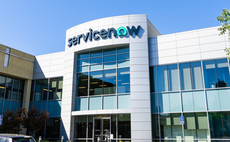
How intelligent automation is making insurance pay
By automating what happens behind the scenes, insurers can create a frictionless experience for the customer across different services and claims, one that is more finely tuned to their needs, which adds up to healthier margins
Insurance is a 250-year-old industry. Ancient in comparison to many of its modern-day applications but today it is going through a genesis driven by data and new technology, particularly in motoring.
Not long ago, insurance was based on ‘monolithic data' - static blocks of knowledge about a customer: Young driver, high risk, high premium or old driver, high risk, high premium. There was respite in the middle, but it was only finite. Thankfully, data can now be gathered in real-time from reams of different sources and devices - from in-vehicle telematics to smartphones. As a result, it is evolving from this rigid and reluctantly accepted status quo.
Insurers embracing change
Central to this is intelligent automation (IA). A real-time, data-centric service demands technology built for that environment, and for insurers embracing change, IA is a critical tool. It goes beyond removing repetitive procedures by combining process mining, artificial intelligence (AI), and other advanced digital technologies. This means faster reaction times, cheaper operational expenses, increased productivity, and thus improved margin.
According to this study by Juniper Research more than 65 per cent of insurance carriers will embrace some degree of automation by 2024, as new technology and changing customer expectations drive rapid transformation in the industry. Meanwhile, a report by Verified Market Research, suggests that the global AI in the motor insurance market size is projected to reach USD 582.41 Million by 2028. We're starting to see it in action, too. USAA has started using a cloud-based AI platform to tally the cost of ‘fender benders' and other collisions within seconds, based on drivers' smartphone photos of their damaged vehicles.
The time for procrastination is over
All of which begs the question, why has the insurance sector been so hesitant to embrace automation? There are a combination of answers here ranging from legacy systems, reticence, misunderstanding and simply fear. Though it must be said the insurance sector is not alone in this journey, it's just way behind some of its contemporaries in the financial services sector. It means that the time for thinking or procrastination is over.
Through a combination of the ubiquitous consumer adoption of smartphones, changes to driving habits, and massive improvements to technology, insurers can no longer hold back the tide of automation because drivers, their vehicles, and driving habits no longer fit into a set of clearly defined boxes. Further delays to adoption will see insurers fall behind their competitors, particularly the digital native platforms with intelligent automation at their core. The question for insurers still tentatively thinking about their first move, is ‘what?'.
The drive to UBI
At the very least, intelligent automation can automate essential but low-value-adding tasks enabling the human workers to focus on customer experience to drive the business forward. Indeed, by automating what happens behind the scenes in a smart, data-centric way, insurers can create a frictionless experience for the customer across different services and claims, one that is more finely tuned to their needs and specific to their usage. This is especially powerful when combined with another trend drivers are calling for - usage-based insurance (UBI).
Through the darkness of multiple lockdowns, drivers have seen the light - some people barely used their vehicles in several months but were billed for a 12-month policy. Our own report, A customer-first future for motor insurance, which examined the changing relationship between motor insurance and the drivers it serves, found that UBI pricing will be standard within four years. But consumer demand for change goes way beyond pounds and pence. They want better communication with their insurers, visibility on premium calculations, and improved support services like the ones they receive from other financial platforms to mirror the tailored approach to pricing.
At the same time, motorists are becoming increasingly conscious of sustainability. While IA isn't going to make the traditional combustion engine vehicle green overnight (or ever, really), it can inform drivers of the best driving routes and times to cut down on waiting or congestion to reduce emissions and improve air quality. Similarly, seeing fuel usage and carbon emissions that are specific to each driver has shown to inform driver behaviour - much in the same way as we do with our heating at home.
Fine-tuning the engine
Insurers that adopt IA can be the ones to put their head above the parapet and quickly get on-side with an evolved customer. But to get to the point of insurance being a real-time, data-informed service requires automation and seamless integration behind the scenes. The beauty of this story is that implementation can be quick and easy, with results - for both driver and insurer - apparent within weeks. Rip and replace existing software is not required with solutions available that can plug and play.
It means all the historical barriers are completely eliminated and insurers can get on with improving tools, services, and intelligence fit for driving today that will deliver benefits across the board.
Callum Rimmer is co-founder of ByBits

















